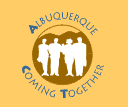"Anatomy of Unified City/ County
Government"
Ray Padilla, Chair, Unification Charter Commission,
Albuquerque Journal, August 15, 2003
As chairman of the commission charged with drafting a blueprint
for a unified Albuquerque and Bernalillo county government, I am
pleased to report that the charter is almost complete.
The results of our work will be put before voters in a special
mail-in election on November 4. We encourage members of the public
to voice their opinions at the last Saturday forum on August 23.
Our approach has been to establish a broad outline, with details
to be filled in by elected representatives of the new government.
Major aspects of that outline, as it now stands, include:
Land Use and Services
Residents in unincorporated parts of the county shouldn’t
worry that unification would increase taxes and threaten their rural
lifestyle. The charter states clearly that all existing ordinances,
zoning codes, and land use policies and plans will remain in effect
unless changed by the new government.
Unification would change how government is organized to deal in
the future with land use issues. In many areas of the city and county,
citizens have been involved in creating plans that protect the unique
qualities of their communities. We have heard from many members
of the public about the need to enforce these plans, that have strong
community support. The best way to assure that plans and policies
are carried out is to have a unified form of government that is
professional, representative and accountable.
Unity
Unification would bring the existing Bernalillo County Commission,
Albuquerque City Council and mayor together into a single Albuquerque-Bernalillo
County governing body consisting of 11 commissioners elected by
district and a mayor elected county-wide.
We believe this structure will foster the cooperation necessary
to develop long-term policies for this diverse community. The mayor’s
role a consensus-building leader will be crucial to the success
of this new approach. Rather than sitting apart from and often at
odds with the council, the mayor would preside over the new commission.
The mayor would have veto power over line items in the budget and,
with ability to make or break ties, could decide close votes. Perhaps
the mayor’s most important role would be that of directly
leading the process of creating long-range goals and objectives
tied to the budget. This role calls for visionary leadership, inspiring
cooperation through persuasion.
Many progressive peer communities in the Southwest, including Tucson,
Colorado Springs and Austin, have this form of government.
The design of government does make a difference in the behavior
of elected officials. An early presentation by Tanis Salant of the
National Civic League described a governing body combining executive
and legislative functions as one designed to "make good things
happen." In contrast, the separation of executive and legislative
branches familiar to us in Albuquerque and at the national level
is designed primarily to "prevent bad things from happening."
The form of government we are recommending is intended to lessen
the divisiveness that too often has impeded progress in our community.
Professionalism
A professional county manager would carry out the policies adopted
by the governing body. It is the manager who would prepare the budget
and measure the performance of agencies and departments to ensure
that policies and plans are implemented. The manager would report
directly to the mayor and commission and provide information sufficient
for them to evaluate and ensure that money is well spent with the
greatest efficiency and effectiveness.
Currently upon election, the Albuquerque mayor selects his team
of chief administrative officer and department heads. Under the
new government, the mayor and commission would select the manager
jointly through an open competitive process emphasizing experience
and qualifications. The manager in turn would hire department heads
confirmed by the commission.
The manager would also assign staff to carry out the functions of
the county clerk, assessor, sheriff, treasurer, and probate judge—all
currently elected. This enables the government to require professional
qualifications for these critical responsibilities. Special committees
of elected commissioners would provide oversight and add public
accountability for these formerly elected officials.
Representation
In some respects, rural areas would gain greater representation
under the new government. For the first time, these areas would
be represented by a mayor elected countywide. The current county
government has five commissioners, each representing a district
of over 100,000 population. Each of the 11 commissioners in the
new government would represent districts of approximately 50,000
population, with potential for expansion over time to a total of
15 districts to accommodate population growth. Smaller districts
will enable each commissioner to be more responsive to constituent
interests.
Our decision to move to partisan elections in the new government
was a difficult one, because the current non-partisan system allows
candidates who would not otherwise be nominated through a system
of party primaries. However, the over-riding concern was that officials
be elected by a majority of those they represent.
In recent years, with run-offs ruled unconstitutional, mayors have
lacked breadth of support and true mandate. Having political primaries
is the only solution we see to ensure majority mandates.
Accountability and Ethics
The new charter incorporates the latest thinking on the challenging
issue of how to make government more accountable. How can we ensure
that government is operating efficiently and effectively in carrying
out the wishes of the citizens? The charter would institute a system
of goal-setting involving the public; program objectives based on
goals; measurement of the cost and results of program services;
and a budget guided by goals and objectives.
The public wants stronger enforcement of rules governing the ethical
conduct of government officials. Therefore under the charter, greater
attention would be paid to the composition of the board of ethics,
and its authority would be expanded to include the power to subpoena
witnesses, initiate investigations, and issue binding declaratory
opinions on matters other than removal of elected officials.
The charter takes the unusual step of guaranteeing funding to protect
the board from retribution by the elected officials it may be investigating.
And it encourages the new commission to establish an effective disciplinary
process for its own members, including potential removal from office.
Transition
The constitutional amendment requires that all of the over 8,000
employees of the City and County become employees of the new government.
Existing wages, benefits, collective bargaining agreements and employee
contracts will continue until modified. The normal process of collective
bargaining will continue as usual every two years, providing adequate
opportunities for addressing employee parity.
If the charter passes, it would be up to the current elected officials
to decide on boundaries for the new districts. Other questions involve
the timeline for change. If the charter is approved, when will the
new government take effect? Who will run it —the existing
elected officials replaced gradually as their terms expire, or a
whole new governing body elected to represent the new districts
on the effective date of the charter? These are issues to be decided
by the charter commission in the next few weeks.
Over the past nine months, we have sought the input of the public
in many ways—through an interactive web site, 30 televised
hearings, opinion articles, public service announcements, and a
series of meetings spanning the East Mountains, the North and South
Valleys, the Northeast and Southeast Heights, and the West Side.
We have listened to many experts and reviewed unifications elsewhere.
The commission has worked very hard to create a charter for an
"ethical, responsible and efficient unified government"
and there is still opportunity for revision and fine-tuning before
final adoption on September 10.
|



